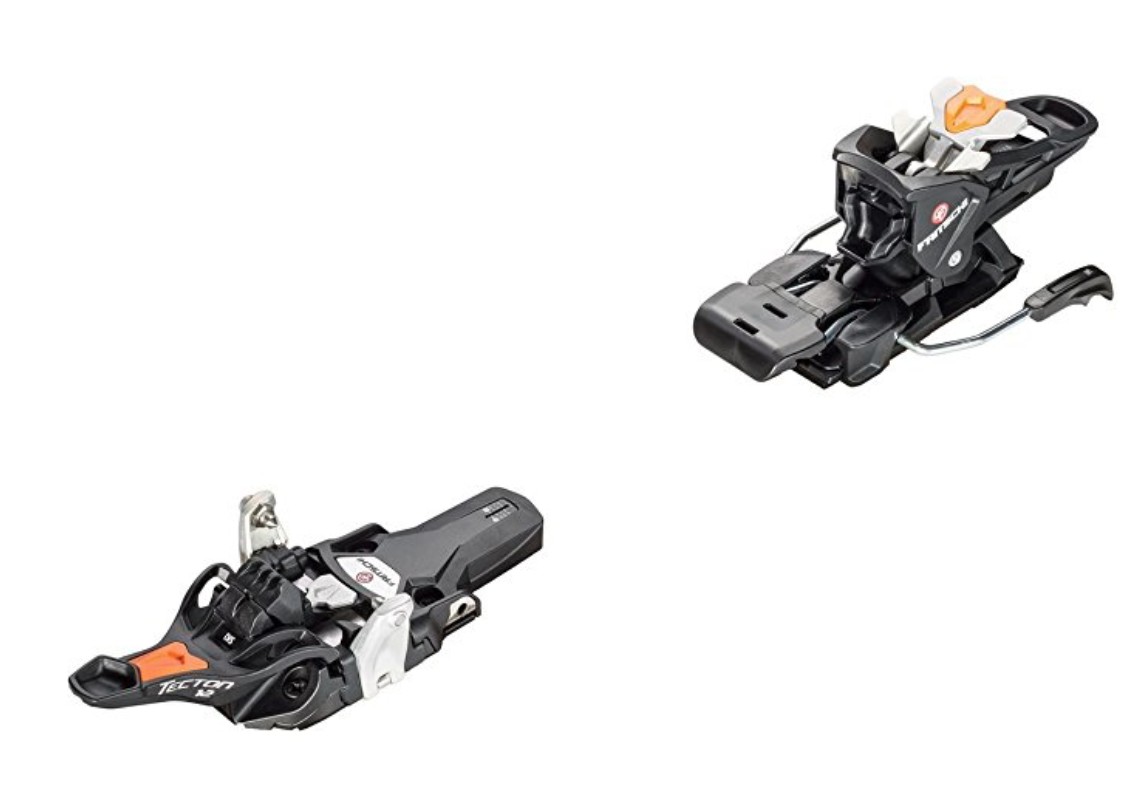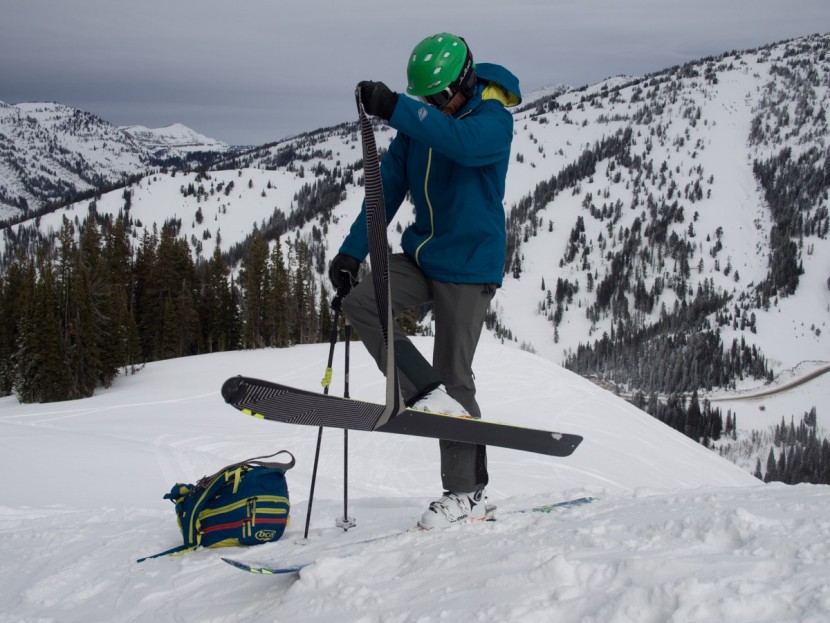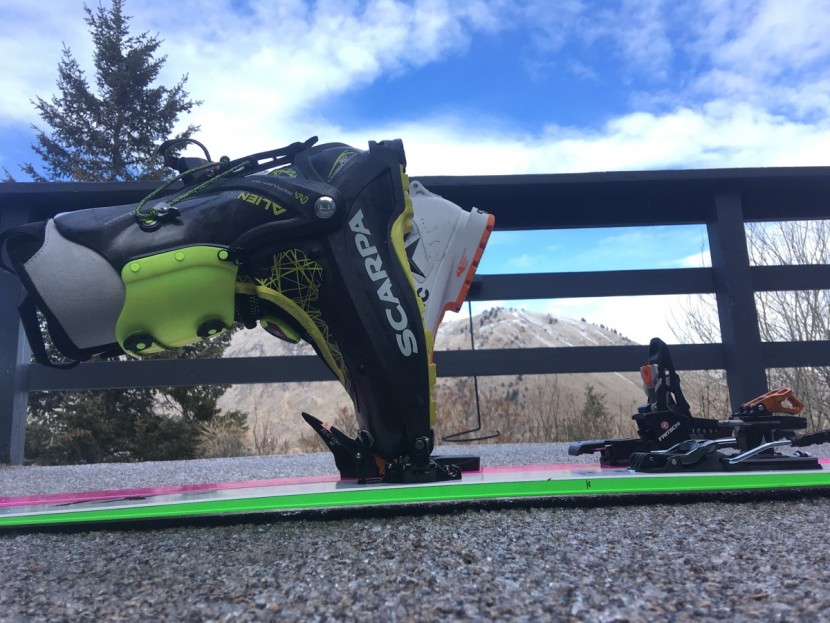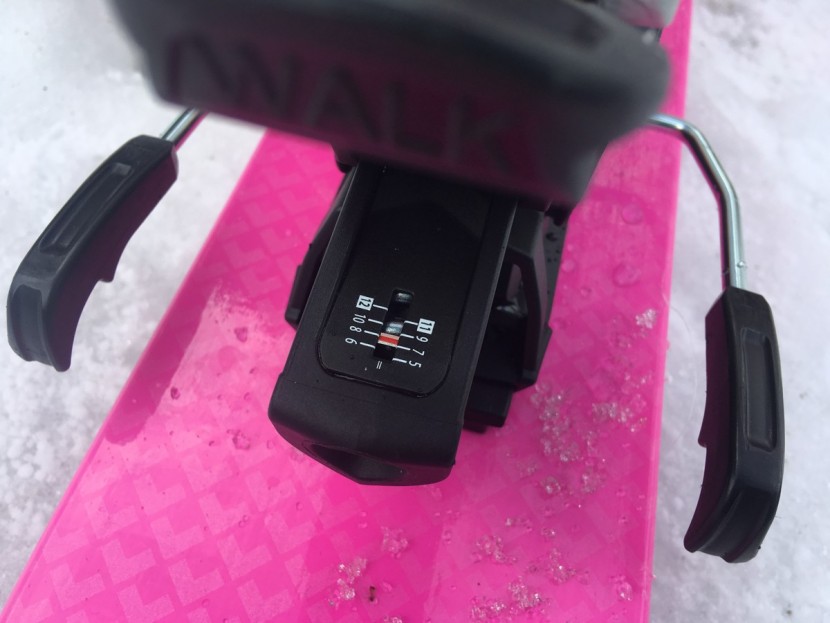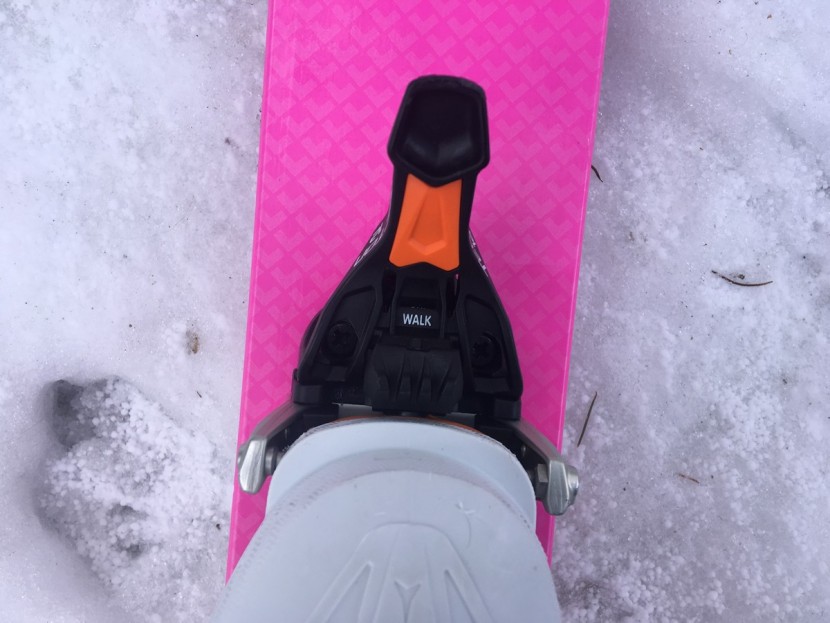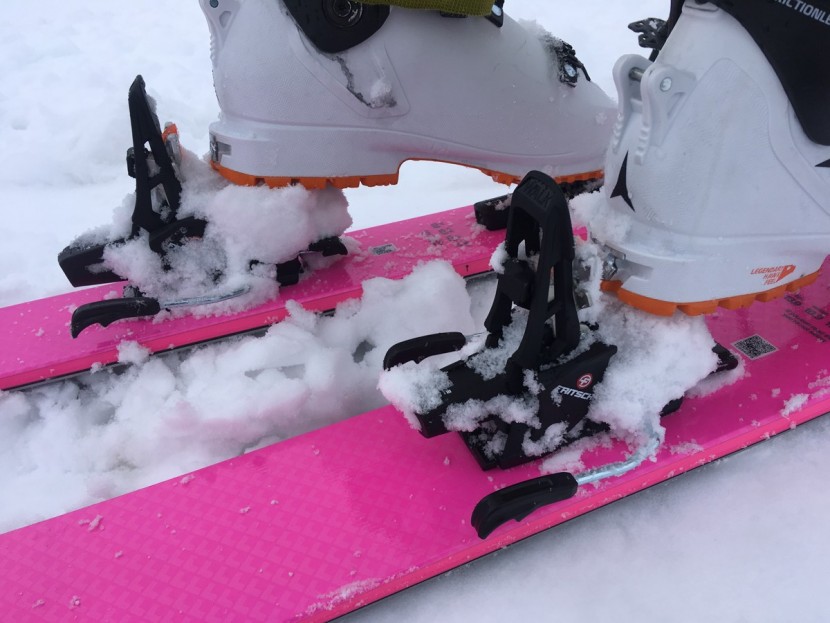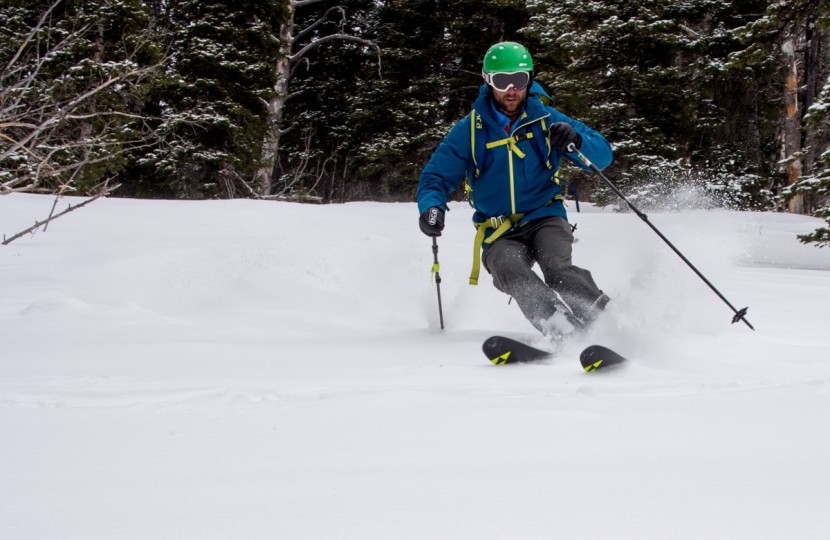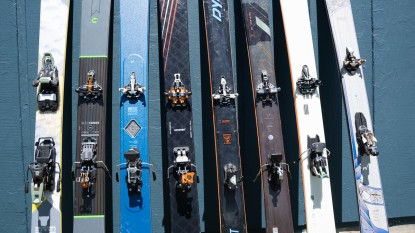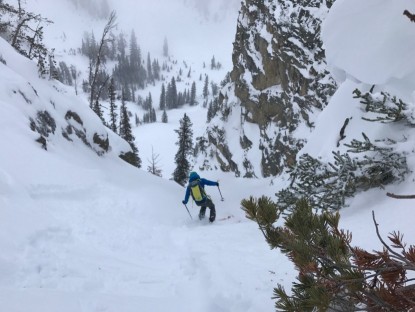Fritschi Tecton 12 Review
Our Verdict
Our Analysis and Test Results
There was a time when this sort of binding was a pipe dream, or one cobbled together in rumored basements. It is a relatively simple idea, with complicated execution. The Tecton combines a tech style toe and its associated efficiency advantages, with an alpine-style heel and its associated downhill performance, and release characteristic advantages. For truly hard-charging skiers (and we mean real hard… You've gotta be skiing like you're eligible for the Freeride World Tour to fully realize all the advantages of the Fritschi Tecton) there are few products like this on the market, and none are as suitable as the Tecton.
Touring Performance
All the moving parts and hardware of the Tecton collect more snow and ice than the smaller, simpler bindings. This inhibits touring performance. The toe piece of the Tecton is innovative. It has significant and important attributes that make the binding, overall, release more safely than other tech bindings. These attributes, though, make the locked, touring-mode interface more flexible than regular tech bindings. When you are accustomed to typical tech bindings, this flex is noticeable and unnerving. For hard snow, steep skinning, and side-hilling, the flex at the toe affects performance. Finally, the bulkier construction of the Tecton toe inhibits boot pivot range. For normal skinning, this is not a problem. For steep kick turns, where you really want to get the tip of your ski to your knee, the Tecton won't cooperate. You will need to adjust kick turn technique accordingly.
The Tecton's touring performance is almost exactly on par with that its closest competitor. Both ice up some, and both have less toe pivot range of motion than other tech bindings. The Tecton tours way, way better than any of the frame bindings. All the other tech style bindings tour better than the Tecton.
Downhill Performance
This is where the Tecton shines. It skis downhill better than all but the beefiest frame style bindings. It skis better than the less sophisticated frame bindings even. The key is that alpine-style heel piece. Full tech bindings are brilliant, and more than enough for most skiers in most circumstances. However, their release is compromised, and the energy transfer is less direct than with the Tecton. The Tecton accomplishes more sophisticated ski performance by directing the force from the sole of the skier's boot, at least at the heel, down onto the ski. Regular tech bindings transfer that force through the heel pins, indirectly to the ski.
The Tecton also offers release “elasticity”, which helps both release performance and routine downhill performance. A little background here helps. To prevent injury, ski bindings need to let you go; they need to give into forces pushing your boot out of the binding. To work at all, they need to hold your foot on the ski; they need to resist forces pushing your boot out of the binding. Some of the forces that prompt a release are the same forces that the binding needs to resist. This is “confusing” for a binding. Alpine bindings address this with “elasticity”. In “normal” ski forces, your foot can be displaced side to side and up and down. In an alpine binding, when the normal ski forces are relieved before the next turn, your boot returns to center and is ready for the next set of forces. If that force continues past “normal”, the boot is eventually released, and your joints are spared the leverage.
Traditional tech bindings, for a variety of reasons, have very little elasticity; this leads to, in some situations, that are likely far rarer than is reported, so-called “pre-release”. Your binding “thinks” that a normal force is an injury force and sends the ski off your foot. Basically, the Tecton has some alpine style “elasticity”. In this way, hard and heavy skiers can push the equipment further without fear of inadvertent release, yet have the confidence that the binding will release when truly needed. Finally, the Tecton releases in more directions with more industry approval than other tech style bindings.
Let us qualify the value of elasticity and downhill performance. It is true that the downhill performance advantages of the Tecton are “for real”. Now, it is also true that everything that can be skied has been skied on simpler, lighter, tech style bindings with “poorer downhill performance”. We have a test team with deep experience and high standards for performance. We like the confidence of skiing with the Tecton, but it isn't that much different. It is our opinion that 99.9% of skiers cannot realize the performance gains of the product. You may ski hard enough on occasion to realize those gains, but you are then probably skiing fast enough and close enough to your own out-of-control line to expose yourself to far more other risk than the Tecton's release advantages mitigate.
Ease of Use
Overall, the Tecton is about average in ease of use. Getting in to the toe pieces is easier than most tech bindings. There are stops to guide you in, and the pins close on a “hair trigger.” This is nice once you are accustomed to it. The toe lock lever is easy to actuate and lock mode is clear. The heel elevators work great and are easily adjusted with your ski pole.
There are pros and cons to transitions with the Tecton; this is kind of a theme. First, Fritschi bindings are the only ones we tested that can be switched from ski to tour mode without taking the ski off. This is nice when your ski route goes from steep to flat or gently downhill. Most ski to tour mode transitions requires taking the ski off to put skins on. In those cases where you don't need to put skins on but wish to go to tour mode, the Fritschi Tecton bindings smooth this out more than others.
In more normal transitions, the Tecton isn't anything special. Levering the heel piece to go from ski to tour mode is a bit of a wrestling match, especially at higher release values. Changing between ski and tour mode is easier on the Tecton than it is with the otherwise close competitor Marker KingPin. Each binding has its quirks. The Tecton is relatively easy to use, a testament to the maturation of this entire category of equipment.
Weight
Across the whole spectrum of bindings we tested, the Tecton is nothing special. It is more than four times the weight of the lightest binding we tested.
Durability
Our test is ongoing, and we hope to tax the durability of the Tecton. For now, after two full seasons on them, we have had no problems at all. The construction is largely plastic, which gives it the weight advantage over similar offerings from other companies but makes it seem more vulnerable to breakage. We have had no problems with it.
Value
The price of the Tecton is competitive, but nothing special. Provided it holds up in the long term (and we'll keep using and abusing them — we'll keep you posted), you will get your money's worth out of these bindings.
Conclusion
It is our opinion that the Tecton will have the greatest appeal to those new to the backcountry. It is most suited to the truly accomplished, but it will have a broader appeal for other reasons. It simply looks more familiar. Committing to ultralight tech style bindings is intimidating. The Tecton looks more like your alpine bindings, and will, therefore, be appealing. Consider your actual usage patterns and preferences and ski style before committing to carry around the weight of the Tecton. If you really need it, the extra downhill performance of the Tecton is worth it. However, if you don't need that performance bump, something half the weight is going to be way more enjoyable. In overall scoring, the Tecton does pretty well.


